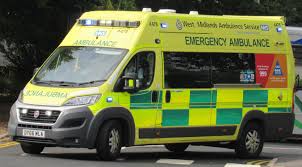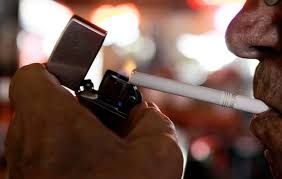
Critical Analysis of Protocol
You will critically analyse your chosen protocol, in the form of a 2500 word academic essay. You should focus on evaluating the relative strengths and
weaknesses of the research and evidence described in the protocol, using the guiding questions (BELOW) as the basis for your appraisal. Please note that you
should not just present a question and answer format – you must write this in an academic essay style so that your analysis based on the guiding questions
flows as an integrated piece of work.
You are expected to justify comments and analysis with reference to literature.
You are trying to determine the strengths and limitations of the protocol, including the evidence which underpins the protocol and in so doing its relevance to your practice, in the same way, that you would review research or opinion based article to determine its strengths or limitations in supporting your discussion.
Protocol to be analysed
GUIDELINE: Initiation of Patient Controlled Epidural Analgesia (PCEA) and Assessment of Motor and Sensory Response in Hip and Knee Surgery Patients Post Combined Spinal Epidural Anesthesia
Department of Nursing
Population/Specialty-Based Clinical Guideline
PTU/PACU
PURPOSE
To provide a guideline for the timely initiation of Patient Controlled Epidural Analgesia (PCEA) based on the assessment of motor function and sensory
response in hip and knee surgery patients post combined spinal-epidural anesthesia.
DEFINITIONS
Combined Spinal-Epidural Anesthesia (CSE): A type of regional anesthesia that combines the benefit of both spinal and epidural anesthesia. The spinal
component gives a rapid onset of a predictable block. The epidural indwelling catheter component provides access for the administration and titration of anesthesia and analgesia (Mulroy, 2002)
CSE allows for a minimal dose of spinal anesthetic of a short duration and allows of the addition of epidural reinforcement of anesthesia and /or
administration of analgesia (Bali, Sharma & Gupta, 2007)
Patient Controlled Epidural Analgesia (PCEA): A method for patient self administration of narcotic-analgesia and a low dose of local anesthetic agent through an epidural catheter via a dedicated programmable infusion pump (Standl et al, 2003; Block et al, 2003).
Sensory Response Level (Dermatome): The dermatome is the area of the skin supplied by the sensory nerve and approximately corresponds to the myotome (Waxman, online).
It may also be assessed to evaluate the extent of spinal blockade and its resolution (Mulroy, 2002).
Motor Function (Myotome): The muscle and its nerve comprise a myotome. Each muscle in the body is supplied by a particular level of the spinal cord and its corresponding spinal nerve. The initiation and resolution of the spinal blockade of anesthesia is determined by evaluating the motor function of the lower extremities (Smet, Vlaminck & Vercauteren, 2017).
PROCEDURE:
Upon Arrival
1. Positioning Patient;
a. If patient is hypotensive, keep HOB flat.
b. If blood pressure in normotensive range (or other BP parameters defined by anesthesiologist) and other vital signs are stable, place patient in semi
fowlers (HOB @ 30 degrees) unless contraindicated by surgeon or anesthesiologist.
c. Initiate comfort measures and orient patient to Recovery area.
GUIDLINE: Initiation of Patient Controlled Epidural Analgesia (PCEA) and Assessment of Motor and Sensory Response in Hip and Knee Surgery Patients Post Combined Spinal Epidural Anesthesia
2. Assess and document patient’s level of consciousness to determine the level of sedation and anesthesia, vital signs (blood pressure, heart rate, and respirations), oxygen saturation via pulse oximetry, body temperature.
Monitor and document every 15 minutes per protocol.
3. Assess pain level
a. Using the Pain Management Guideline for patients who respond verbally and follow commands.
b. Refer to Pain Assessment Tool for Non-Cognizant Adults.
4. If pain present and no motor movement has occurred, follow physician orders.
5. Access of the epidural catheter and document condition of dressing;
a. Transparent dressing intact, notify anesthesia immediately if not intact.
b. If displaced, bloody, or leakage present, notify physician.
6. Motor Function:
a. Assess and document both lower extremity movements.
b. Motor function is assessed by asking patient to move lower limbs especially the unaffected side, since movement of the unaffected limb usually occurs sooner than the affected limb.
c. Assess every 15 minutes per xxx until meets xxx discharge criteria.
d. Document dermatome level before transferring patient to the floor.
7. The assessment indicator for the resolution of CSE anesthesia and initiation for PCEA is any movement of either lower extremity. This is due to the
relatively low dose of local anesthetic in the PCEA that is routinely used in post hip and knee surgery patients. Thus, the low dose of medication is
unlikely to cause motor and sensory blockade and interfere with the resolution of CSEA (Patel, Sadoughi & Zadeh 2010).
8. Sensory Response
a. For assessment of dermatome level, use alcohol prep to assess “cold” and “wet” sensation (Bourne, Campbell, Mushambi & May, 1997).
b. Assess the non affected area first (for example chest or upper arm) then the affected area.
c. Assess every 15 minutes per xxx until meets xxx discharge criteria.
With the return of any movement of either lower extremity: Prepare to initiate PCEA
1. Two RNs verify medication with physician order
a. Confirm settings on infusion pump are entered correctly per order
b. Co-signatures of RNs are entered on the paper record
c. Label tubing “PCEA”
2. Assess and document vital signs (blood pressure, heart rate, and respirations), oxygen saturation via pulse oximetry, body temperature to ensure
hemodynamic stability.
3. Assess and document the integrity of the epidural catheter transparent dressing and report presences of excessive leakage or displacement at site.
4. If hemodynamically stable, initiate PCEA per physician’s order.
GUIDLINE: Initiation of Patient Controlled Epidural Analgesia (PCEA) and Assessment of Motor and Sensory Response in Hip and Knee Surgery Patients Post Combined Spinal Epidural Anesthesia
5. Continue to assess and monitor vital signs, pain level, and adverse responses to PCEA every 15 minutes.
a. If hypotension occurs as a result of any pain medication administered,
notify physician and monitor vital signs more frequently.
b. Assess for adverse responses such as respiratory depression, nausea, vomiting, pruritis, local anesthetic toxicity, urinary retention/incontinence,
hallucinations, and dense/high block. If any occur, notify physician.
c. If pain is unrelieved while receiving PCEA, administer prn pain medication orders per xxx orders to initiate “Clinician Dose” of xxx per order set. The
patient’s pain level dictates which medication and dose to administer, (See Physician order set).
d. If unrelieved pain continues, notify MD for additional orders until acceptable level of pain control has been achieved.
e. Following initiation of the PCEA, the local anesthetic agent( e.g. Bupivicaine) may adversely spread to the intrathecal space causing motor weakness or worsening sensory blockade (Bourne, Campbell, Mushambi & May, 1997; Patel, Sadoughi & Zadeh 2010).
6. Continue to assess and document every 15 minutes
a. Both lower extremity movement and sensory response
b. Pain level
c. Vital signs
7. Continue monitoring and documentation until patient meets criteria for discharge from xxx
a. Hemodynamically stable one hour following initiation of PCEA
b. Resolution of CSEA has occurred as demonstrated by dorsi-flexion of the unaffected foot.
LOC- Awake and alert.
RELATED RESOURCES
Adult Pain Management Nur-Hs G1006
REFERENCES
Bali, A., Sharma,J.,Gupta, S.D. (2017). Combined spinal epidural anesthesia. JK Science, 9(4), 161-163.
Block, B.M., Lui,S.S.,Rowlingson, A.J., Cowan, A.R.,Cowan, J.A., Wu, C.L.
(2003). Efficacy of postoperative epidural analgesia, a meta-analysis. JAMA, 290(18), 2455-2463.
Bourne,T.M.,Campbell, F.,Mushambi, M.C.,M.C.,May, A.E.(1997) Patients’ assessment of sensory levels during epidural analgesia in labor. International Journal of Obstetric Anesthesia,6,239-241.
Mulroy, M.F., (2002). Regional Anesthesia, An Illustrated Procedural Guide (3rd ed), Philadelphia, PA: Lippincott Williams & Wilkins.
Patel, N.,Sadoughi,A.,Zadeh,B.(2010). Anesthesia Dept.Santa Monica/UCLA
Smet,I.,Vlaminck,E.,and Vercauteren,M.(2007).Randomized controlled trial of patient controlled epidural analgesia after orthopaedic surgery with sufentanil and ropivacaine 0.165% or levobupivacaine 0.125%. British Journal of Anesthesia, 1-5. Doi:10.1093/bja/aem309,1-5.
Waxman SG, “Chapter 5. The Spinal Cord”.(n.d.) Waxman SG: Clinical Neuroanatomy,26e. Retrieved from
http://www.accessmedicine.com/content.aspx?aID=5271677&searchStr=spinal+cord#5271677
Standl,T.,Burmeister,M.,Ohnesorge,H.,Wilhelm,S.,Striepke,M.,Gottschalk,A.,Horn,E.,Esch,J.(2003).Patient-controlled epidural analgesia reduces analgesic requirements compared to continuous epidural infusion after major abdominal surgery. Canadian Journal of Anesthesia. 50(3). 258-264.
Guiding questions and points to help you critically appraise a protocol Notes / bullets (for completion by student
- What topic does the protocol address?
- What are the component parts of protocol?
- Were there aspects of the protocol which you found unclear, and if so, why?
- What were the different types of evidence which were used to develop the protocol (e.g. research studies; systematic reviews; government policies; grey
literature) - Where does the evidence that underpins the protocol fit in a hierarchy of evidence?
- Evaluate the key pieces of evidence which were used to develop the protocol looking at, for example:
• how current the evidence is
• the relevance of the evidence
• the quality of the research carried out - Evaluate the strength of the body of evidence used to develop the protocol (i.e. taken all together, does the evidence support the aims and outcomes of the
protocol?) - How much confidence can be placed in the evidence which underpins the protocol?
- What are the practice guidelines and requirements you can identify in the protocol?
- What are the implications of these findings for your own practice?
References must not be more than 5 years old
We can write this or a similar paper for you! Simply fill the order form!










